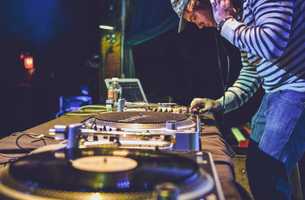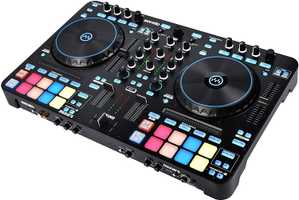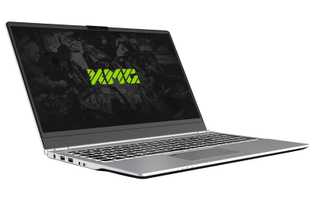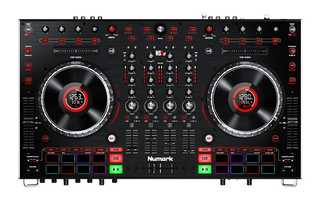Get Your Groove On How to DJ with Just a Laptop and Some Software

How to DJ with a laptop
Introduction
If you're a DJ, then you know that the key to success is preparation. You need to know all of your equipment and software, as well as how to configure them so that they work together seamlessly.
There are many different ways of doing this, but one of the easiest ways is by using a laptop and its built-in programs.
Get a laptop
You will need a laptop to DJ on. The best laptops have powerful processors and high-quality screens, keyboards, and trackpads. They also have a long battery life so you can bring them with you wherever you go!
If your DJ software is not compatible with your computer’s operating system (OS), then installing the latest version of the OS into it will help make sure everything runs smoothly at all times.
The best laptops for DJing are available in different sizes, weights, and configurations. You should look at all the options available before making a decision.
The best laptops for DJing should have a powerful processor and high-quality screen. The processor will help you run all your software smoothly without any lag or crashing. A screen that is too small will make it difficult to DJ with ease.
Get a set of mixer
The mixer is the most important part of your DJ setup. It's what allows you to mix the music together, so you can create new tracks from scratch or simply change the volume of each instrument in a song on top of what's already playing.
You'll need at least three things: a laptop connected to turntables and speakers; an external mixer (like this one); and some headphones for monitoring your mixes.
The mixer is the most important part of your DJ setup. It's what allows you to mix the music together, so you can create new tracks from scratch or simply change the volume of each instrument in a song on top of what's already playing. You'll need at least three things:
a laptop connected to turntables and speakers; an external mixer (like this one); and some headphones for monitoring your mixes.
Get a pair of turntables
You'll need a pair of turntables for DJing. The most important thing is to get the right ones, which means that you should check out some reviews on Amazon or elsewhere before buying anything.
A good pair of headphones will also help you hear what's coming through your speakers so that when someone else wants to talk about something and starts playing music over their headphones, you'll know what they're talking about!
If you're going solo and don't want anyone else listening in on your setup as well (or maybe just don't want them listening at all), then take advantage of wireless microphones like the Audio Technica ATR2100 Super Cardioid Dynamic Microphone ($40). This mic sits around 20 inches away from whatever recording device is being used—so if there's any way possible it should work perfectly!
You need to have a laptop as well as other DJ tools
You need to have a laptop as well as other DJ tools. These include:
- Mixer (a DJ mixer is used to control the volume, EQ, and other settings on your audio interface)
- Turntables (a turntable is used for playing vinyl records)
CD Player (a CD player is used to play digital music files) -A DJ controller can be used in place of a mixer and turntables. A controller is an electronic device that allows you to mix music without needing additional equipment.
-DJ software is used to mix and edit music. Some DJ software comes with a controller that you can use to control the software.
-A DJ mixer allows you to control the volume and EQ settings on your audio interface. It also has inputs for connecting turntables, CD players, and microphones. -A microphone is used by DJs to announce songs, introduce the band members or provide commentary during performances.
Choose the right software
When you're looking for the right DJ software, it's important to consider a few things. First and foremost is the ease of use.
Do you want to be able to spend your time on other things while your computer runs?
If so, then look for a program that makes it easy for you to start playing music without having too much technical knowledge or experience under your belt.
Secondly, make sure that whatever software program you choose is compatible with all of the equipment in your setup (which includes laptops). If not, then there's no point in using this particular piece of software you'll have wasted money on something useless!
Finally (and most importantly), check out what features are included in each different version so that when buying one thing doesn't work out exactly as another thing did previously. This can help ensure both parties are satisfied by their purchase decisions from now forward."
Connect your equipment
- Connect your turntables and mixer to your laptop.
- Connect the turntables to the mixer.
- Connect the mixer to your laptop.
Select the media player on your laptop. Play a song and adjust the volume on your mixer. Use the crossfader to fade between songs.
If you’re using a DJ controller, connect it to your laptop and install the software that came with it. Plug in any additional controllers you have (like a mixer or microphone).
Select the media player on your laptop. Play a song and adjust the volume on your mixer. Use the crossfader to fade between songs.
If you’re using a DJ controller, connect it to your laptop and install the software that came with it. Plug in any additional controllers you have (like a mixer or microphone). Select the media player on your laptop. Play a song and adjust the volume on your mixer. Use the crossfader to fade between songs.
If you’re using a DJ controller, connect it to your laptop and install the software that came with it. Plug in any additional controllers you have (like a mixer or microphone).
Select the media player on your laptop. Play a song and adjust the volume on your mixer. Use the crossfader to fade between songs. If you’re using a DJ controller, connect it to your laptop and install the software that came with it. Plug in any additional controllers you have (like a mixer or microphone).
Configure your audio settings
You need a laptop as well as other DJ tools. It's important to have a set of mixers, turntables, and software on hand when you start DJing. If your equipment doesn't match up with these tools, it will be difficult for you to mix the music properly.
Once again, make sure that all of your equipment is compatible with each other before starting out on this journey!
To get started playing music from your laptop:
You'll need to have DJ software on your laptop. These are usually free and can be downloaded from the internet. They have different features that make it easy for you to mix music and create mixes. If you don't have DJ software installed, then you'll need to find one online and download it onto your laptop before starting out.
Once you have your DJ software installed, open it up and play some music. You can either use songs that are already on your laptop or connect an external device (such as a USB drive) to add more music files to the program.
Practice and prepare
The first step to learning how to DJ with a laptop is practicing your mixes. Make sure that you have all of the equipment necessary, including an audio interface and speakers/headphones.
Next, make sure you know how to use these things properly so that when it's time for actual performance (which will come later), everything works seamlessly together.
Tips and tricks
- Use a laptop with a solid-state hard drive. Hard drives can be lost, broken or destroyed. If you use one of these methods to destroy your hard drive, then it won't work as an external storage device and you'll have to buy another one (or just buy yourself some more money).
- Use a laptop with a large screen. A lot of DJs like big screens because they're easier on their eyes during long hours of DJing—and they provide more space for all of the equipment you need!
- Have at least 8GB of RAM installed in your computer(s) if possible; this will help improve performance and speed up boot times when starting up applications or loading files onto them from other devices like USB drives or CDs/DVDs that contain music tracks which aren't stored on any hard drives but rather directly onto memory cards inserted into special expansion slots located inside certain laptops instead."
Conclusion
Now that you’re equipped with all the basics, it’s time to get out there and start DJing! If you follow these tips, you can make sure that even on a budget your next gig will be a huge success. Good luck!




